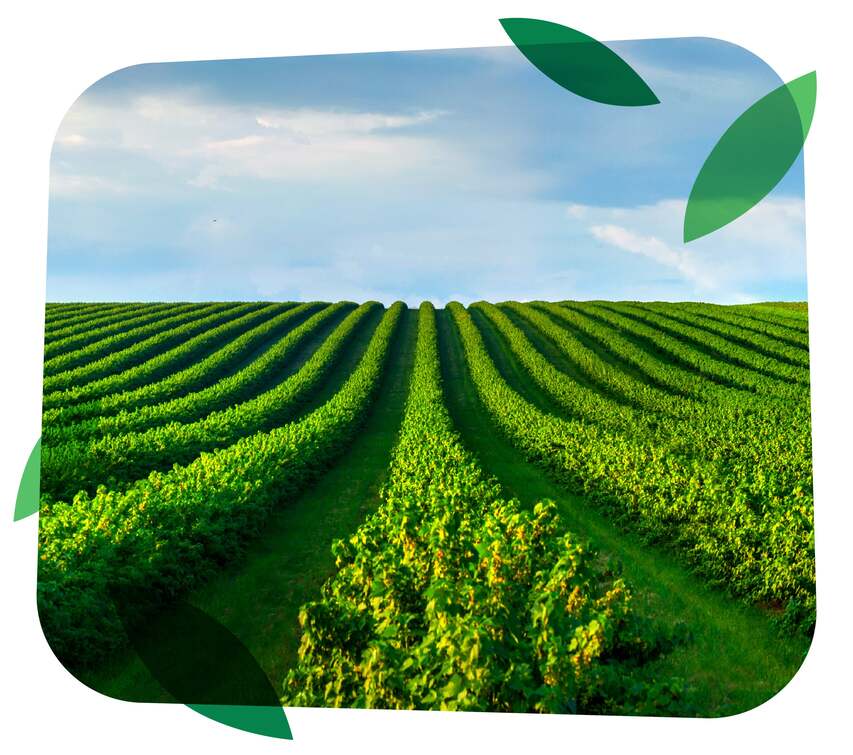Follow our thorough recommendation, including a program for foliar spraying and a fertilization recommendation for olive trees in spain
Plant population: 500 Trees/Ha.
Soil type: light to medium.
Expected yield: 30-50 Kg/tree (15 – 25 MT/ha).
Recommendation for a young, non-bearing orchard
Follow every irrigation with proportional application of fertilizers better N:K balanced 1:1 starting only after the trees have shown some signs that they have established (apply plain water for the first 1-2 weeks), starting with 1 gr of nitrogen for every tree for every day for every year age, while P can be and applied as base-dressing around 1000 kg SSP/ha or 500 kg TSP/ha.
For the above example:
If tree density is 1250 trees/ha, first year, every tree will get 1 g/day of N, the whole field 1250 g of N a day, for a week it will be 8750 g N for Ha. For example using 20-20-20 it will be 43750 g or 45 kg approximately that will be divided over the water quantitative application or better proportionally.
Do not forget any foliar application of high N and Mg will help for better vegetative development, say 1%.
| Orchard age (years) | N | K2O |
|---|---|---|
| (Kg/ha) | ||
| 1 | 50-80 | 50-70 |
| 2 | 80-120 | 70-120 |
| 3 | 120-150 | 120-145 |
Phosphate should be supplied according to leaf analysis.
Recommendation for a bearing orchard
| N | P2O5 | K2O |
|---|---|---|
| (Kg/ha) | ||
| 200-300 | 200-240 | 395-480 |
Phosphate should be applied according to leaf analysis.
Recommendation for a non-irrigated orchard
- One application per Year -
After harvesting it is recommended to supply 2.5-3.5 Kg/tree of 25-8-14 or 25-4-10. - Two applications per year -
During winter - half of the recommended amount of nitrogen and the total amount of potassium and phosphate.
After the harvest or in spring - 1 Kg N/tree as urea or ammonium sulphate.
For irrigated trees it is suggested to double the recommended amount of nutrients for high yielding olives.
- In case a fertigation setup is not available, the total amount of nutrients should be split to 4-6 application from March till end of June.
- If a fertigation setup is available, the following scheme is recommended, with the following guidelines:
- End fertigation 50 days prior to harvest.
- Divide fertigation into weekly amounts and apply with at least three hours of irrigation.
- Adjust fertilizer program as indicated by leaf analysis.
| N | P2O5 | K2O | Multi-K | MAP | Amm. Nit | |
|---|---|---|---|---|---|---|
| (kg/ha) | (kg/ha) | |||||
| Spring - early Summer | 125-185 | 200-240 | 246-300 | 540-650 | 320-390 | 190-200 |
| Post Harvest | 75-115 | - | 150-180 | 330-400 | - | 50-130 |
| Total | 200-300 | 200-240 | 395-480 | 870-1,050 | 320-390 | 240-330 |
Multi-K – Potassium nitrate (13-0-46).
MAP – Mono ammonium phosphate (12-61-0).
Amm. Nit – Ammonium Nitrate (34-0-0).
Olives - Recommendation for Spain
Intended use: oil extraction.
Plant Population: 500 Trees/Ha.
Soil type: light to medium.
Expected Yield: 30 MT/ha.
Application method: Fertigation.
| Application by Month | Multi-K | MAP | Amm. Nit |
|---|---|---|---|
| (Kg/ha) | |||
| February | 0 | 150 | 21 |
| March | 0 | 100 | 78 |
| April | 0 | 94 | 111 |
| May | 26 | 94 | 183 |
| June | 75 | 47 | 219 |
| July | 125 | 0 | 205 |
| August | 195 | 0 | 60 |
| September | 200 | 0 | 0 |
| October | 200 | 0 | 0 |
Multi-K – Potassium nitrate (13-0-46).
MAP – Mono ammonium phosphate (12-61-0).
Amm. Nit – Ammonium Nitrate (34-0-0).
Foliar spraying
In addition to soil-applied fertilizers, foliar fertilizer applications are important in supplementing nutrient requirements at peak demand periods. Olive nutrition is critical in the spring and at the end of the summer season before harvesting.
Inflorescence and vegetative growth occur during spring. Foliar applications help accelerate vegetative growth and reproductive development – encouraging shoot growth, improving fruit set and reducing alternate bearing.
The end of summer is the main fruit growth period. The olive fruit is very efficient at removing nutrients from the leaves. Foliar sprays help enrich the leaves at these high nutrient demand periods. Foliar sprays at this period will help increase yield and improve the chemical quality of the oil.
Multi-K: 2-4 applications of Multi-K from February to October 3 Kg/100 Litre of water, at a rate of 8-10 litre/tree.
Poly Olive is a special soluble foliar NPK fertilizer for olive trees with microelements.
Poly Olive (15-3-25+1.2Mg) recommendation
| Growth stage | Formula | Spray volume | Concentration |
|---|---|---|---|
| Inflorescence* | Poly Olive | 500-700L/ha | 1% |
| Fruit Development* | Poly Olive | 50-700L/ha | 0.5-1.5% |
* 2 applications, 2-3 week interval between applications.
Source: P. Aguilar, Ferquisa.
It is a common practice to apply it in autumn and lately in spring also. Experience has proved that when you have a good harvest it is recommended to spray twice, in spring and in autumn. If you want to split the products, blends with Mg and boron are preferable for the spring treatment and plain Multi-K for the second spray.
Usual rates are 2%-3% with 7-9 liters of the solution/tree (according to tree volume).
Usually no compatibility problems with copper fungicides and with insecticides, but hydrolysis may occur with dimethoate (the most widely used) as it collapses at pH 8 in one hour or less. Growers don’t pay attention to this concept but it is important in a written recommendation.
Macro elements removed by 1 ton marketable product
| N | P | K | Ca | Mg | S |
|---|---|---|---|---|---|
| -------------------------------------- Kg/ton ------------------------------------------ | |||||
| 9.8 | 11.3 | 10.3 | |||
Source: Kinoch: VOLHOUBARE LANDBOU, RSA. Processed by Frans Lourens, Haifa, RSA May, 1999.
Plant analysis guide
Nutrient sufficiency ranges (source: A & L, Agronomy Handbook, Ankerman & Large Eds.)
| Olive | N | P | K | Mg | Ca | S | Na | B | Zn | Mn | Fe | Cu | Al |
|---|---|---|---|---|---|---|---|---|---|---|---|---|---|
| ------------------ % ------------------- | ---------- p.p.m ----------- | ||||||||||||
| From | 1.50 | 0.10 | 0.75 | 0.25 | 2.00 | 0.20 | 0.01 | 20 | 15 | 50 | 45 | 5 | |
| To | 2.20 | 0.20 | 1.50 | 0.50 | 2.50 | 0.35 | 0.10 | 35 | 20 | 100 | 100 | 20 | |
Plant tissue sampling procedures:
| Growth stage | Plant part |
|---|---|
| Five to eight weeks after full bloom | 4 to 8 leaves from spurs or near base of current season’s growth |
Need more information about growing olives? You can always return to the olive tree fertilizer & olive crop guide table of contents





